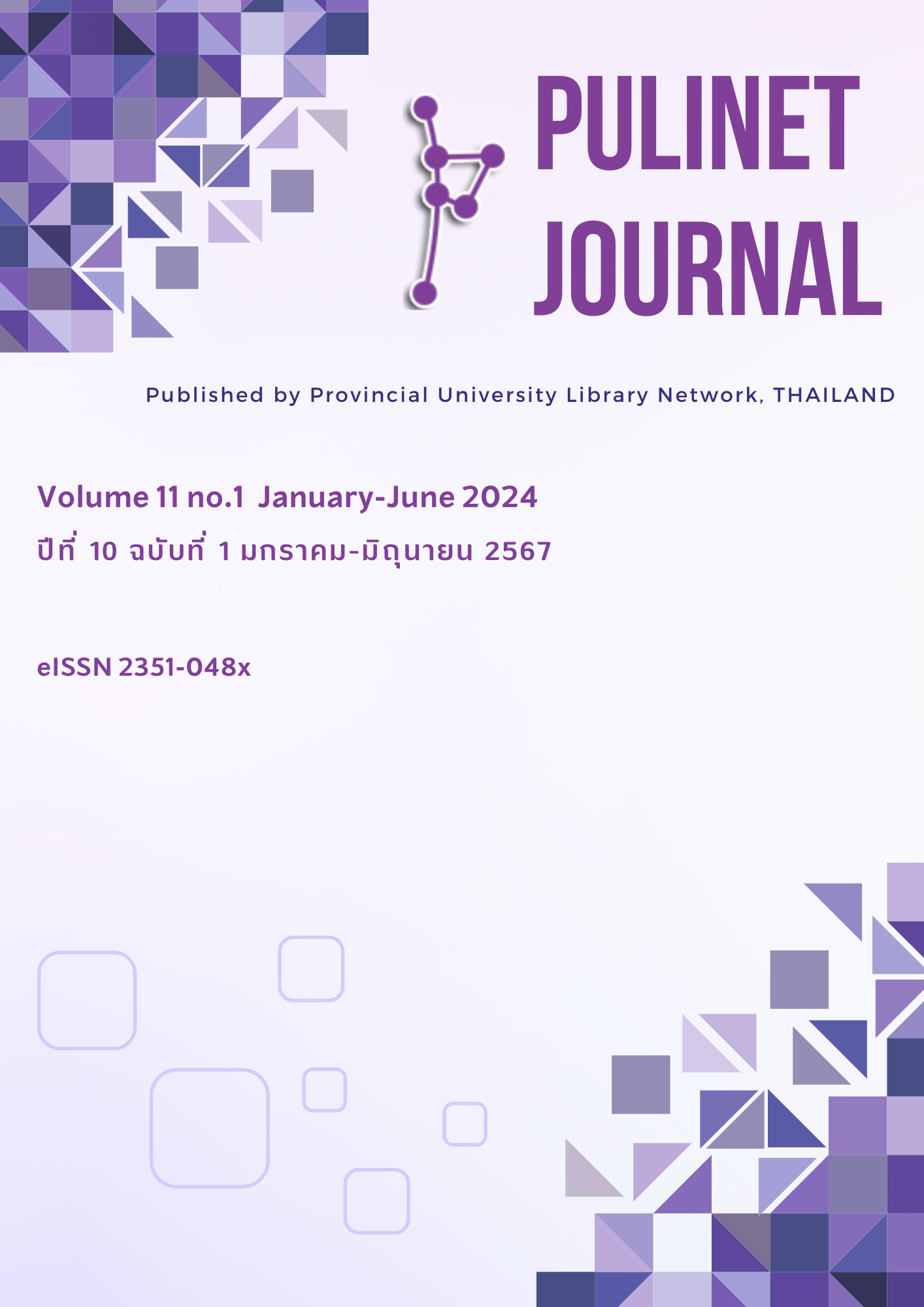การพัฒนาระบบตรวจสอบการเชื่อมโยงแหล่งทรัพยากรสากล (URL) แบบอัตโนมัติ ด้วย Azure AI Service
Main Article Content
บทคัดย่อ
การพัฒนาระบบตรวจสอบความถูกต้อง ความพร้อมใช้งานและปรับปรุงการเชื่อมโยงแหล่งทรัพยากรสากลแบบอัตโนมัติ ด้วย Azure AI Service มีวัตถุประสงค์สำคัญในการดำเนินการพัฒนาระบบเพื่อเพิ่มประสิทธิภาพการเข้าถึงแหล่งทรัพยากรสารสนเทศให้แก่ผู้ใช้บริการสามารถเข้าถึงได้อย่างถูกต้องและรวดเร็ว ด้วยการปรับรูปแบบการทำงานการตรวจสอบการเชื่อมโยง URL ของทรัพยากรสารสนเทศที่ให้บริการบนฐานข้อมูลทรัพยากรห้องสมุด (WebOPAC) จากระบบแมนนวล (Manual) เป็นการทำงานด้วยระบบอัตโนมัติ ส่งผลให้ลดระยะเวลาและขั้นตอนการปฏิบัติงาน รวมถึงการเพิ่มประสิทธิภาพการบริการ ซึ่งผู้พัฒนาระบบใช้หลักการและขั้นตอนตามวิธีการของวงจรการพัฒนาระบบ (SDLC: System Development Life Cycle) โดยดำเนินการด้วย Azure AI Service และใช้ Python 3 ในการพัฒนาโปรแกรม จากผลการดำเนินการพบว่า ระบบช่วยลดขั้นตอนกระบวนการและระยะเวลาในการปฏิบัติงานในส่วนของ 1) การตรวจสอบความถูกต้องของรูปแบบการเชื่อมโยง ซึ่งเกิดจากความผิดพลาดของผู้กรอกข้อมูล 2) การตรวจสอบสถานะของการเชื่อมโยงและปรับปรุงแหล่งการเชื่อมโยงใหม่ โดยกระบวนการทั้งหมดใช้เวลาเฉลี่ยที่ 1-2 วินาที ต่อ 1 รายการ ทั้งนี้ ระบบสามารถนำไปประยุกต์ใช้กับการทำงานหรือระบบอื่น ๆ โดยไม่จำกัดแค่ระบบห้องสมุดอัตโนมัติเพียงอย่างเดียว เช่น ระบบ Digital Repositories ระบบ Journal System รวมถึงแหล่งเชื่อมโยงของเว็บไซต์ที่เชื่อมกับหน้าเว็บต่าง ๆ โดยไม่จำเป็นต้องจัดสรรงบประมาณเพื่อการจัดซื้อหรือจ้างพัฒนาระบบ
Article Details

อนุญาตภายใต้เงื่อนไข Creative Commons Attribution-NonCommercial-NoDerivatives 4.0 International License.
เอกสารอ้างอิง
B.T. Sampath Kumara, D. Vinay Kumarb. (2012). HTTP 404-page (not) found: Recovery of decayed URL citations. Journal of Informetrics, 7(1), 145-157
Iterative Inc. (2023). PyDrive2’s documentation. https://docs.iterative.ai/PyDrive2
Kenneth Reitz. (2023). Requests III: HTTP for Humans and Machines, alike. https://3.python-requests.org
Microsoft. (2023). Bing Search API documentation. https://learn.microsoft.com/en-us/azure/cognitive-services/bing-web-search
Mohamed Sami (2012). Software Development Life Cycle Models and Methodologies. https://melsatar.blog/2012/03/15/software-development-life-cycle-models-and-methodologies/
กอบเกียรติ สระอุบล. (2563). เรียนรู้ Data Science และ AI : Machine Learning ด้วย Python. มีเดีย เนทเวิร์ค.


